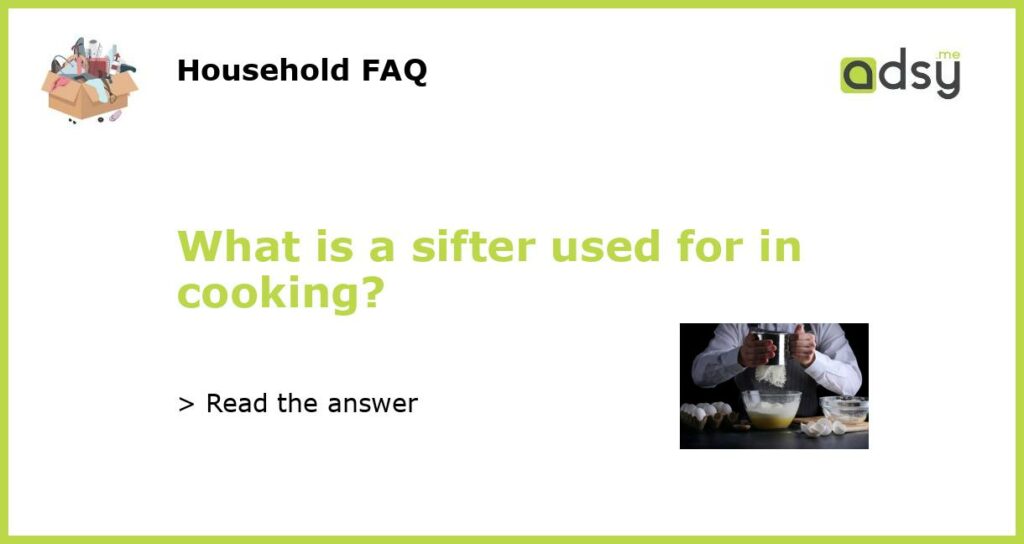What is a sifter used for in cooking?
A sifter is a kitchen tool that is frequently used in baking and cooking. It is designed to separate and aerate dry ingredients, such as flour, powdered sugar, baking soda, and cocoa powder. By passing the dry ingredients through a mesh screen, a sifter helps to remove any lumps and evenly distribute the ingredients, resulting in a smoother and more consistent texture in the final product. Let’s explore the various uses and benefits of a sifter in the culinary world.
Eliminating Lumps in Dry Ingredients
One of the primary purposes of using a sifter is to eliminate lumps in dry ingredients, particularly flour. Over time, flour can become compacted, resulting in lumps that can affect the texture of your baked goods. By passing the flour through a sifter, the lumps are broken apart, ensuring that the dry ingredients are uniform and free of clumps, resulting in a lighter and fluffier finished product.
Incorporating Air into Dry Ingredients
A sifter also helps incorporate air into dry ingredients. As the dry ingredients are passed through the fine mesh screen of the sifter, the particles become aerated, creating a lighter and more airy texture. This is particularly important in recipes that call for the creaming method, where the butter and sugar are beaten together. The sifting of the dry ingredients ensures that the mixture is light and fluffy, contributing to a better overall texture in the final baked goods.
Mixing and Combining Dry Ingredients
In addition to removing lumps and incorporating air, a sifter is also useful for mixing and combining dry ingredients. Many recipes require the blending of multiple ingredients, such as flour, baking powder, and salt. Rather than measuring each ingredient separately and then stirring them together, a sifter allows for the quick and efficient blending of these dry ingredients, ensuring that they are evenly distributed throughout the batter or dough.
Dusting and Decorating
Aside from its primary role in incorporating and blending dry ingredients, a sifter can also be used for dusting and decorating purposes. Powdered sugar or cocoa powder can be sifted over cakes, pastries, or other desserts to create a uniform and professional-looking finish. Additionally, a sifter can be used to dust a work surface or dough with flour to prevent sticking.
Straining Liquids
While the primary use of a sifter is for dry ingredients, it can also be used to strain small quantities of liquids. Whether you need to strain tea leaves from your tea or remove lumps from a sauce or gravy, a fine-meshed sifter can act as a makeshift strainer in a pinch. It allows the liquid to flow through while filtering out any unwanted particles.
To summarize, a sifter is a versatile kitchen tool that is primarily used in baking and cooking to remove lumps, incorporate air into dry ingredients, mix and combine ingredients, dust and decorate, as well as strain small quantities of liquids. Its fine mesh screen ensures that dry ingredients are uniform and free of lumps, resulting in better-textured baked goods. Whether you’re a professional chef or a home baker, a sifter is an essential tool in the kitchen that can greatly enhance your cooking and baking results.






